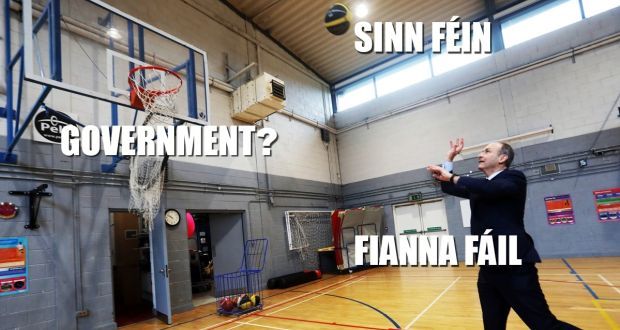Ireland goes to vote today

Can Sinn Féin be in government?: Sinn Fein has moved from political pariah to potentially winning the greatest share of the votes in the Irish election, according to latest polls. While the party cannot achieve a majority of TD’s (MP’s), due to running 42 candidates only, out of the 80 needed to achieve a majority, Sinn Fein has been riding a wave of anger on strained public services, the shortage of housing in the country, as well as finding greater support for its call towards Irish unity in the face of Brexit.

How do you get people to talk about you?: Sprout Social’s Gerard Murnaghan, might have given the best explanation of how should social media posts should be structured to achieve maximum effect in a political campaign. In his words, they should be “walking the fine line of being engaging and entertaining, without being controversial or overly familiar”. It seems that governing party, Fine Gael, did not get the memo, though, as in the first weeks of the campaign they shared a video Fianna Fáil TD’s running around Dublin frantically looking for policies. The video got attention, but the wrong kind, as the party seemed negative by deciding to attack Fianna Fáil this way.
This did get people talking though; Fine Gael was the most talked about party on twitter in the first week of the campaign, garnering 30,000 mentions. While Irish citizens still expect politicians to canvass door to door, social media has increasingly been used to access new and younger audiences and engage more people.
Things to look out for in an online campaign: The Irish Times reports that the dark days of January and the beginning of February made it harder for parties to rely on the traditional posters and billboards. Social media has been more effective in reaching people. The four of the five things we can expect to find in online campaigns, according to the article by Liz Carolan, are:
1) virality – which I believe is the most important marker of any social media campaign, as this reduces costs in reaching wider audiences.
2) Paid advertising – This tactic is questionable, as according to the article, studies have shown that an audience reached through these paid ads tends to further entrench its beliefs, rather than change its views. However, this hypothesis has only been tested on political systems with two main parties such as the US and the UK. It would be interesting to have a study on how paid ads play out in systems which use Single Transferable Voting such as Ireland, where second and third place votes make a lot of difference.
3) and 4) The use of deception techniques – from trying to encourage a certain section of society to not show up to vote, to ‘Astroturf’ campaigns, to the use of tools such as photoshop or Deep Fakes to mislead the electorate. This is where the infamous tactic of ‘shitposting’ fits in; online campaigns pushing forward ironic memes, often of poor quality, which grab the attention of the audience and most of the time end up being re-shared.